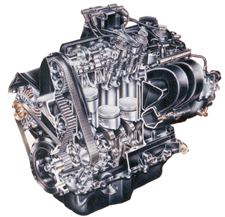
Rebuilding the Chrysler 2.0L Neon Engine Can Be a Gas
Adapted from Doug Anderson's feature in Engine Builder, and borrowed by 2GNT.com from this link
When Chrysler introduced the Neon in '95, it came with an all-new 2.0L engine that was available in both SOHC and DOHC versions, depending on the vehicle application.
This new family of engines was unique because the lower portion of the cast iron block incorporated a "bedplate" that tied all the main caps together into a rigid structure that reduced noise, vibration and harshness (NVH). The DOHC version was even more unusual because it came with two different heads, one that had the intake ports facing toward the front and one that had the intake ports facing to the rear. Chrysler made the engine both ways so that it could be installed in the cars that were built on the Chrysler platform, that was used for the Neons; as well as the ones that were built on the Mitsubishi platform, that was used for the Dodge Avenger and Chrysler Sebring Coupes.
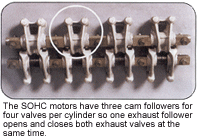
The original 2.0L was a pretty good engine from day one, so Chrysler hasn't made a lot of changes to it, but it still takes three short blocks, four heads and four completes to cover all the SOHC and DOHC applications from '95 through '99. Let's start with the blocks and walk our way through all the major components.
Blocks
' '95 SOHC: The original SOHC block had either a 4667642 or a 4556651 casting number on the upper portion of the block and 4667769 casting number on the bedplate, but the upper portion of the block was unique to this application. It had two holes in the driver's side (front) for the vent tubes that were part of the aspirator system that was used on the SOHC motor only in '95.
These blocks also had an oil baffle inside the crankcase that deflected the oil away from the vent holes to prevent oil consumption. And, the notches for the bearing tangs were offset from each other in '95 instead of across from each other like they were on the later blocks. So, these blocks were all by themselves for two reasons: 1) because of the vent holes and 2) because of the location of the notches for the bearings.
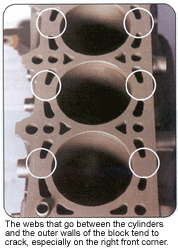
'95-'99 DOHC: The DOHC motors all came with the 4667642/4556651 upper casting and the 4667769 bedplate, but the two holes for the vent tubes found on the '95 SOHC motors weren't drilled in the DOHC blocks because they all came with a conventional PCV system from day one. The notches for the bearings were offset from each other on the '95 DOHC blocks instead of straight across like they were in '96, so there's a slight difference between the '95 and the '96-'99 DOHC blocks, but they're still interchangeable as long as you notch the block for the later style main bearings. (See the note on main bearings in the assembly tips).
'96-'99 SOHC
All of the '96-'99 SOHC blocks used the 4667642/4556651 upper casting along with the 4667769 bedplate. The shelf was still cast on the side of the block, but the holes for the vent tubes weren't drilled because the SOHC engine came with a regular PCV system starting in '96. The notches for the main bearings were almost straight across from each other on all of these blocks, just like they were on all the later DOHC blocks.
Cranks
Both the SOHC and DOHC engines share the same 4667755 crank casting. It's made out of nodular iron and it's fully counterweighted for better balance.
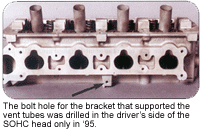
Rods
All the rods for the 2.0L engines are made of powdered metal and have c racked caps. There isn't a casting number on them, but you may be able to see the number 4667241 ink-stamped on the beam if you're lucky. They measure 5.472Ë from center-to-center and have a .8255Ë pin bore. Don't mix them up with the 2.4L rods; they look the same, but they're 5.94Ë from center-to-center.
Heads Up
SOHC: There are two single overhead cam heads and two dual overhead cam heads. The SOHC heads are almost identical, but the two DOHC heads are completely different.
The '95 SOHC, the original SOHC, head was a 4556737 casting that had seven 6.0 mm holes and three 8.0 mm holes for the rocker cover. It also had a bolt hole in a boss on the driver's side (front) of the head for the bracket that supported the vent tubes that were part of the aspirator system in '95.
Chrysler continued to use the 4556737 head casting on the SOHC from '96-'99, but all of the rocker cover bolts were 6.0 mm. The hole on the side of the head that was used to hold the vent tubes in '95 wasn't drilled because they weren't used for the regular PCV system.
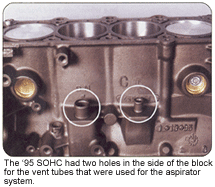
DOHC: For the '95-'99 DOHC ' Chrysler Platform, the 4667086 head casting had the intake ports to the front, so it only fits on the engines that were installed in the cars that were built on the Chrysler platform.
On the '95-'99 DOHC ' Mitsubishi Platform, Chrysler put a different head on the DOHC engines that were installed in the cars built on the Mitsubishi platform. The 4667867 casting had the intake ports facing toward the back of the engine so it would fit into the Mitsubishi platform that was used for the Dodge Avenger and Chrysler Sebring Coupes along with the Mitsubishi Eclipse and the Eagle Talon.
Cam Tips
'95 SOHC ' The SOHC engine originally came with a 4667667 cam that had 12 lobes with two narrow ones (.450Ë) and one wide one (.690Ë) between each journal. The lift at the intake lobes (narrow ones) was about .190Ë to .200Ë and about .170Ë to .180Ë on the exhaust lobes (wide ones). There is no identification on these cams other than the six pairs of two lines stamped in the outer diameter of the flange that's right behind the back journal.
However, Chrysler put a different cam in the '96 SOHC motor. It's 4777128 and it has about .175Ë to .180Ë of lift at the lobe for the intakes and about .178Ë to .191Ë for the exhausts. Most of these cams have a series of two to six punch marks stamped around the perimeter of the flange that's right behind the back journal on the cam.
95-'99 DOHC ' With the intake ports to the front for placement in the Chrysler vehicle platform.
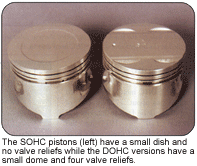
Intake Cam: The original 4667917 cam has been replaced by the 4777631AA that appears to be interchangeable. It can be identified in two ways:
1) It should have either 917 or 631AA etched on the back of the cam or on the semi-finished area in the middle of the cam.
2) With the dowel pin at the 12:00 o'clock position, the first lobe should be at the 11:00 o'clock position.
Note: The rear flange on this cam is .337Ë wide.
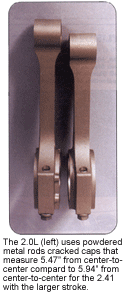
Exhaust Cam: The original 4667918 cam has been replaced by the 4777632AA that should be interchangeable, too. It can also be identified in two ways:
1) It should have either 918 or 632AA etched on the back of the cam or on the semi-finished area in the middle of the cam.
2) With the dowel pin at 12:00, the first lobe will be at 6:30.
Note: The rear flange on this cam is .160Ë wide.
95-'99 DOHC ' With the intake ports to the back for the Mitsubishi platform.
Intake Cam: The original 4667673 cam has been replaced by the 4777629AA. You can identify it as follows:
1) It should have either 673 or 629AA etched on the back or on the semi-finished area in the middle of the cam.
2) With the dowel pin at 12:00, the first lobe should be at 3:30.
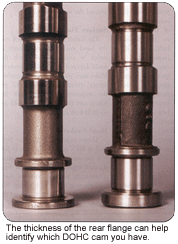 Note:The rear flange on this intake cam is .160Ë wide for the Mitsubishi applications.
Exhaust Cam: The original exhaust cam for this application was a 4667675. It's been replaced by part number 4777630AA. It can be identified in two ways:
1) It should have either 675 or 630AA etched on the back of the cam or on the semi-finished area in the center of the cam.
2) With the dowel pin at 12:00, the first lobe should be at 3:00.
And, just to make it more interesting, note that the flange on this exhaust cam is .337Ë wide for this application.
That's about all there is to know about the major components, but there are a few more things you need to know in order to rebuild these engines successfully.
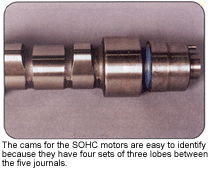
Technical Tips to Rebuilding Neons
' Main Bearings: The location of the tangs on the bearing shells was changed in '96, so the later bearings won't fit the '95 blocks. Unfor-tunately, no manufacturer in the aftermarket is making the bearings for the '95 blocks, so rebuilders will have to notch the '95 blocks to make the later bearings fit.
Rods: The powdered metal rods have cracked caps so they can't be reconditioned by cutting the caps, but several vendors offer oversize OD rod bearings with common undersizes, so it's really not a problem.
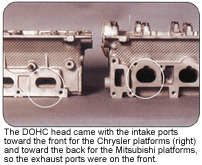
Blocks: The webs on the deck that go between the top of the cylinders and the outer walls of the block tend to crack, especially up on the right front corner where the air conditioning compressor mounts. Be sure to check all of them and repair the ones that are cracked.
Water Pumps: The water pump bearing is pretty heavily loaded because of the tension on the timing belt, so it's important to use a high quality, brand name water pump with a heavy duty bearing and a premium, unitized seal to reduce the possibility of a premature failure and a comeback.
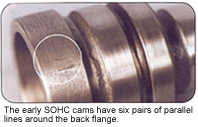
Heads: We haven't seen a lot of cracked heads, but some of them have to be welded because of the corrosion around the water holes.
Surface Finish: The finish on both the block and the head must be very smooth in order to seal properly with the multi-layered steel (MLS) gaskets. Make sure you follow the manufacturers' recommendations and get the required finish on both the block and the head or you will get to do it over again.
Head Gaskets: These engines should be built with a MLS gasket. Be sure to follow the manufacturer's recommendations regarding the use of supplementary sealers. Some of these gaskets won't seal with it and others won't seal without it, so read the instructions first.
Oil Galley Plugs: There are several small cap plugs that are used to seal the oil passages in the heads. It's hard to get them out without nicking the bores, so we recommend tapping the holes and installing pipe plugs in all of them. It's cheap insurance against a leak.
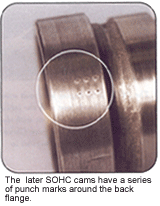
Did You Know...
Neon, a rare, colorless, and inert gaseous chemical element, is found in the earth's atmosphere. Co-discovered by British scientists Sir William Ramsay and M.W. Travers in 1898, Neon is used in discharge tubes, gas lasers, etc.
Piston Points
' There have been two pistons used in the 2.0L, one for the SOHC engines and one for the DOHC motors.
All of the SOHC engines from '95 thru '99 came with a piston that had a small dish and no valve reliefs.
All of the pistons for the DOHC motors had a small dome and four valve reliefs.
Put it to bed
' The lower part of the block, that which Chrysler calls the bedplate, is bolted to the upper casting and sealed with a very sticky "glue" at the factory. This sealer is very hard to get off, but it's very important that you don't remove any material from the bedplate while trying to clean it up because you will change the size of the main bores if you do.
Be sure to note the location of the bolts for the bedplate during disassembly because there are different length bolts used in different places.
Use an anaerobic sealer between the block and bedplate when assembling the engine. Don't use anything thicker, or you will increase the main bearing clearance and that's not a good idea.
| 
